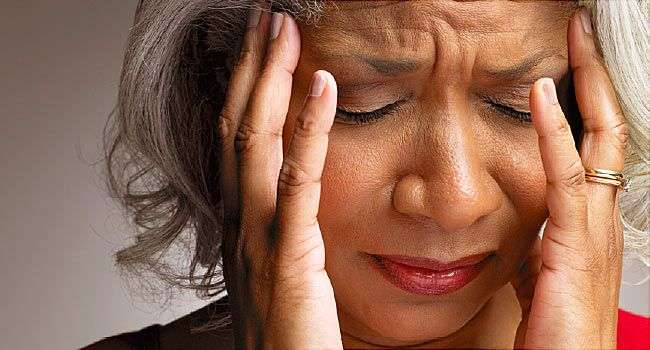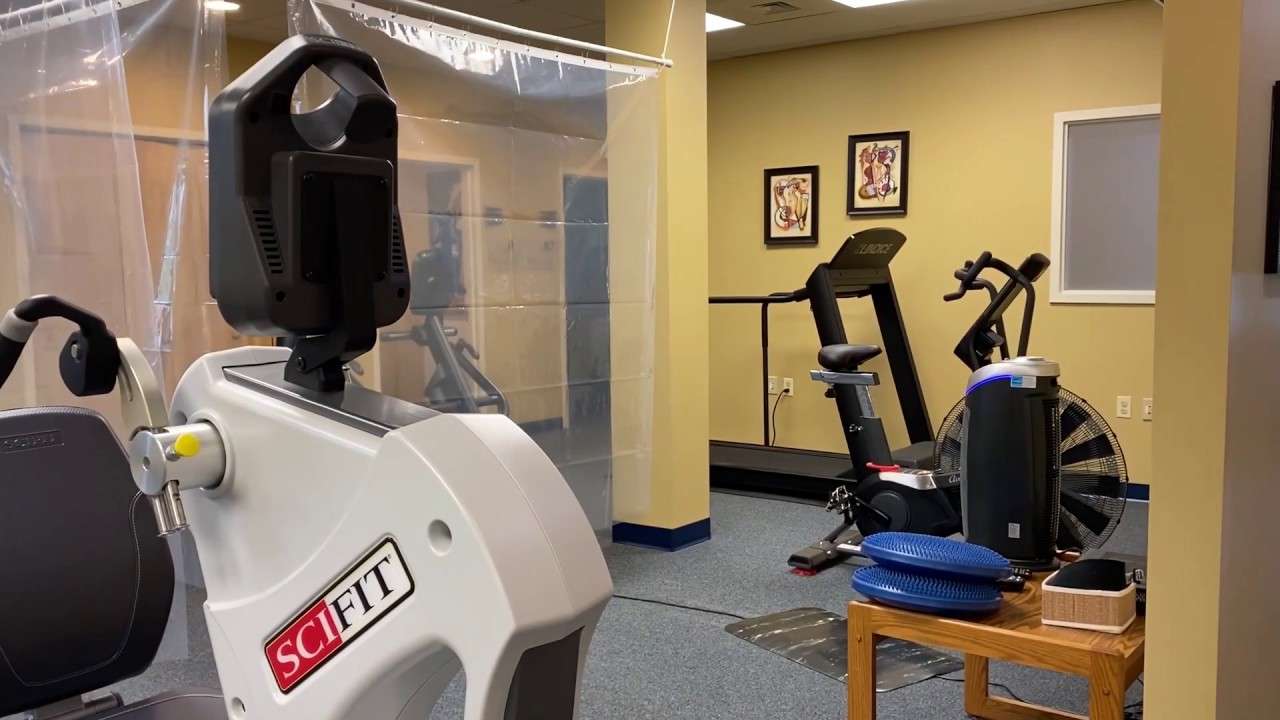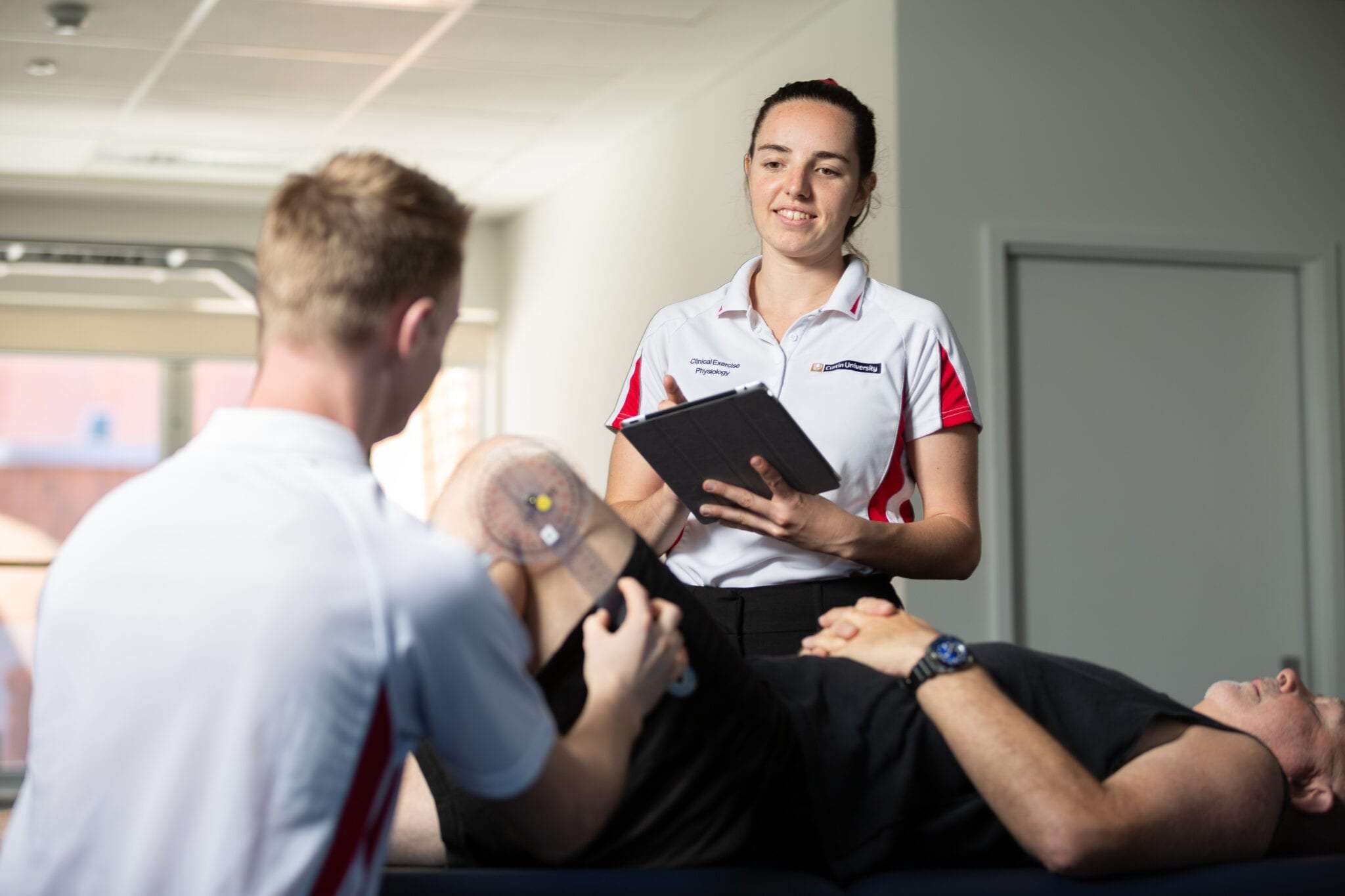Most of us know about the emotional symptoms of depression. But many people with depression live with chronic pain or other physical symptoms, too.
These aren’t “all in your head.” Depression can cause real changes in your body. For instance, it can slow your digestion, which can cause stomach problems.
Because these symptoms happen with many conditions, people with depression may never get help for them. They don’t realize that their physical problems might be caused by their mental illness. A lot of doctors miss them, too.
Physical Symptoms
Depression seems to be related to improper functioning of nerve cell networks or pathways that connect the brain areas that process emotional information. Some of these networks also process information for sensing physical pain. So many experts think that depression can make you feel pain differently than other people.
Any kind of chronic pain may get worse.
- Headaches are fairly common. If you already had migraine headaches, they may seem worse.
- Back pain
- Muscle aches and joint pain
- Chest pain. It can be a sign of serious heart, stomach, lung or other problems. But depression can add to the discomfort.
- Digestive problems. You might feel queasy or nauseated. You might have diarrhea or become constipated all the time. It’s common to either lose your appetite or overeat.
- Exhaustion and fatigue. No matter how much you sleep, you may still feel tired or worn out. Getting out of the bed in the morning may seem very hard, even impossible.
- Sleeping problems. Many people with depression can’t sleep well anymore. They wake up too early or can’t fall asleep when they go to bed. Others sleep much more than normal.
- Change in appetite or weight. Some people with depression lose their appetite and lose weight. Others find they crave certain foods, like carbohydrates, and weigh more.
- Dizziness or lightheadedness
Treatment
Tell your doctor about any physical symptoms: Don’t assume that they’ll go away on their own. Try keeping a symptom diary, which can help you identify patterns.
Sometimes, treating your depression — with therapy, medicine, or both — will clear up your physical symptoms. Medicines for depression “tweak” the chemicals your nerve cell networks use to communicate, making them work more efficiently. Some antidepressants, such as duloxetine (Cymbalta), venlafaxine (Effexor), and older tricyclic antidepressants like amitriptyline (Elavil) or desipramine (Norpramin), may help with chronic pain, too.
But you may also need something else. For example, your doctor may suggest an anti-anxiety or sleep aid medicine for insomnia so you can relax and sleep better.
Since pain and depression can sometimes go together, easing your pain may lift your depression, as well. You could try cognitive behavioral therapy. It can teach you ways to deal better with pain.

Headaches, a queasy stomach, muscle pain—is it time to reach for the aspirin or ibuprofen? Or is it anxiety or depression causing your symptoms?
Anxiety and depression are best known for causing mental distress—making you feel nervous, worried, sad, or numb. But these common psychiatric conditions—anxiety affects an estimated 40 million Americans and depression hits approximately 17 million—are also associated with a host of physical symptoms.
According to Amen Clinics, a global leader in brain health that has treated tens of thousands of people with mental health issues over the past 30 years, here are 5 of the most common physical symptoms of anxiety and depression.
5 COMMON PHYSICAL SYMPTOMS OF ANXIETY AND DEPRESSION
1. Headaches
Research has found that headaches are common in people with depression or anxiety, especially in people with a generalized anxiety disorder or panic disorder. Some people experience tension headaches that can cause mild to moderate pain and may involve stiffness in the neck and shoulders. Others suffer from migraines, which are associated with more severe pain and can interfere with daily activities. A 2018 study in the journal Headache found that people with frequent migraines are more likely to experience anxiety and/or depression.
2. Muscle tension, soreness, or chronic pain
Muscle tension is often seen in people with anxiety or panic disorder, and chronic pain is frequently seen in depressed people. Research in the Journal of the Neurological Sciences shows that people with depression tend to have a lower tolerance for pain. At Amen Clinics, brain SPECT imaging studies show that people who experience chronic pain often have too much activity in an area of the brain called the thalamus, which is part of the limbic system (the emotional centers). On SPECT, overactivity in the limbic system is often associated with depression.
3. Nausea, upset stomach, digestive distress
Everyone knows that anxiety about a big life event can trigger a nervous stomach, but the connection between the digestive tract and mental health goes even deeper. Feeling nauseous, having stomach cramps, or experiencing constipation or diarrhea are all associated with anxiety and/or depression. Findings from a 2016 study appearing in Advanced Biomedical Research showed that people with irritable bowel syndrome (IBS) have higher anxiety and depression symptoms compared with people who don’t have IBS. And a 2011 study found that people with anxiety or mood disorders were more likely to have constipation compared with the general population.
4. Fatigue or lack of energy
When you have anxiety, you may worry incessantly, which can be exhausting. But the fatigue you feel may also be related to sleep troubles. Anxious thoughts may make it difficult to fall asleep or may cause you to wake up in the middle of the night when worries start spinning in your mind. Research in Dialogues in Clinical Neuroscience shows that about 75% of people with depression also have insomnia, and other scientific evidence reveals that over half of the people with anxiety have trouble sleeping. A smaller percentage of people with depression sleep more than usual, but still feel daytime sleepiness. If you aren’t sleeping well, get an evaluation before taking sleeping pills, which may be hard to stop.
5. Chest pain or rapid heartbeat
During a panic attack, it is common to suddenly feel your heart start racing or tightness in the chest. This usually resolves after the panic attack subsides. In people with depression, chest pain can become chronic. Research shows that people with cardiovascular disease are more likely to suffer from depression, and on the flip side, people with depression or anxiety are at a greater risk of developing heart disease. Because of this, if you experience chest pain, it’s very important to see a doctor to check it out.
WHAT TO DO WHEN PHYSICAL SYMPTOMS PERSIST
You may not realize that the recurring aches and pains, digestive issues, or fatigue you experience are related to mental health problems. Many people simply head to their primary care physician or another traditional medical professional in an effort to treat the physical issues without considering the possibility of underlying anxiety and/or depression. Getting to the root of the problem is the key to feeling better.
Always remember that your brain, body, and mind are interconnected. Notice when your physical symptoms arise. Is it during times of increased stress, nervousness, or sadness? Becoming aware of an increase in pain, more frequent headaches, or an uptick in digestive problems or other physical symptoms may be a clue that anxiety or depression may be rising and that it’s time to seek professional help.
Anxiety, depression, and other mental health issues can’t wait. During these uncertain times, your mental well-being is more important than ever and waiting until life gets back to “normal” is likely to make your symptoms worsen over time.
At Amen Clinics, we’re here for you. We offer in-clinic brain scanning and appointments, as well as mental telehealth, remote clinical evaluations, and video therapy for adults, children, and couples. Find out more by speaking to a specialist today at 888-288-9834. If all our specialists are busy helping others, you can also schedule a time to talk.
Physical symptoms of depression: 13 signs you may have it
Table of Contents
Mental health conditions like depression impact not only your mind, but can also cause physical symptoms in your body.
Most people know how emotionally taxing mental health issues can be. But what many people don’t know is that when you have depression, physical symptoms can impact you significantly. Let’s look at 13 physical symptoms of depression, why they occur, and what you can do to start feeling better.
 For people with anxiety and depression, purposefully engaging in pleasurable activities can improve mental health.Mental health conditions like depression impact not only your mind, but can also cause physical symptoms in your body.
For people with anxiety and depression, purposefully engaging in pleasurable activities can improve mental health.Mental health conditions like depression impact not only your mind, but can also cause physical symptoms in your body.
Most people know how emotionally taxing mental health issues can be. But what many people don’t know is that when you have depression, physical symptoms can impact you significantly. Let’s look at 13 physical symptoms of depression, why they occur, and what you can do to start feeling better.
1. Issues with sleep
It’s common for depressive disorders to cause issues with sleep—both sleeping too much, known as hypersomnia, or too little, insomnia. People with insomnia are at increased risk for depression, and more than half of people with depression report trouble falling or staying asleep. Some researchers even believe that depression and insomnia share common neurobiology.
2. Fatigue
Depression can slow your whole system down—one reason people with depression sometimes move and speak more slowly than usual, to the point that it’s noticeable to others or challenging to function. Feeling lethargic is quite common with this condition.
There may be a reason for this. The polyvagal theory actually sees depression as a part of the human body’s biologically intelligent makeup. According to this theory, depression might be your body’s physiological response to perceived danger or defeat.
This theory hypothesizes that depression is the same kind of survival response an animal has when it freezes or shuts down when confronted with a threat. This may contribute to some of the changes you experience with sleep and your energy level.
When you have depression, your sleep schedule may change dramatically. You may slow down in your speech, movements, and even in your mental processes. Many people experience this decrease in energy as fatigue.
3. Muscle aches
Having depression can worsen bodily inflammation. Researchers have demonstrated that pain mediators produced in response to inflammation can induce depressive symptoms. On top of that, some studies show that depression can increase pain sensitivity, though conflicting research also exists.
According to polyvagal theory, feelings of pain—both physical and mental—may arise to keep you from expending unnecessary energy. Muscle aches and other kinds of pain may keep you from working or spending time with others.
4. Joint pain
Vague aches and pains can be some of the first symptoms of depression. Many people seeking medical advice for joint pain and other types of physical pain only have physical symptoms, making it especially challenging to diagnose depression.
But the relationship between pain and depression is bi-directional, meaning that depression can lead to more significant pain and that higher pain levels can bring on depression.
Serotonin and norepinephrine are neurotransmitters that impact both pain and mood. An imbalance in these transmitters is linked to both depressed mood and the physical experience of pain.
5. Digestive issues
Emotional stress often occurs with conditions like irritable bowel syndrome (IBS) or general gastrointestinal issues. The symptoms of these conditions include nausea, diarrhea, appetite fluctuations, and cramps. You might also experience a sinking feeling in the stomach. All of these can be interrelated with emotional stressors and mental health conditions like anxiety and depression.
You may have heard about the brain-gut connection. The millions of nerve cells that line your gastrointestinal system can receive and send messages to your brain. Irritation or imbalance in the digestive system can impact mood, just as emotional stress can affect digestion.
6. Dizziness or lightheadedness
Psychological conditions such as anxiety and depression can present with dizziness or lightheadedness as a symptom. Some research indicates that as many as 20% of people with dizziness experienced high levels of psychological distress.
7. Back pain
Chronic or severe back pain puts you at risk for major depression because the stress pain causes your whole system. Especially if you’re already experiencing emotional stress, depression can magnify your thoughts and physical sensitivity to pain. In addition, increased pain, especially chronic pain, can lead to feelings of depression and hopelessness.
8. Headaches and migraines
Depression headaches are another common physical manifestation of depressive disorders. Cluster headaches, tension headaches, and migraines are frequently reported by people experiencing depression.
9. Changes in hunger and weight
Depression can lead some people to seek comfort by eating more than usual and binge eating. For others, having depression can lead to less interest in food and a decreased appetite. Fluctuations away from your healthy baseline of appetite and weight can be related to depressive disorders.
10. Low libido
A key symptom of depression is anhedonia, a decreased ability to enjoy activities that are typically pleasurable. And this doesn’t just apply to your hobbies. When your body is stressed by depression, physical symptoms such as low sex drive can lead to erectile dysfunction, inability to achieve orgasm, and even a complete lack of interest in sex. Learn more about how anxiety impacts sexual arousal and functioning.
Learn more about premature ejaculation here.
11. Feeling restless and fidgety
Some people experience co-occurring symptoms of anxiety and depression, which are sometimes described as agitated depression. Instead of feeling lethargic, you may be unable to sit still. With agitated depression, you may also feel more impulsive, irritable, and restless.
12. Vision problems
People with impaired vision are at increased risk for depression. Similarly, people who are currently depressed often report seeing the world as looking “dull” and are less perceptive to visual contrasts. And studies show that among older adults, issues with vision and vision loss are among the most common conditions associated with depression.
13. Skin reactions and disorders
Issues with your skin, especially chronic or recurring conditions such as psoriasis or eczema, are correlated with elevated risk for certain depressive disorders. Skin issues are also a commonly occurring effect of anxiety on the body.
Can depression make you sick?
Yes. The same system in your brain that moderates experiences of physical pain also moderates moods. Depression can be experienced and expressed in the mind and body as emotional, behavioral, cognitive, and physical symptoms.
For example, when you’re feeling sad, avoiding life, and engaging in negative thinking, you may experience physical signs of depression, such as body aches and pains.
Further, experiencing chronic pain or illness increases your risk for depression. Depression can also cause physical pains in your body. Cytokines, the immunomodulating molecules released by cells, are a bidirectional factor in both bodily inflammatory symptoms and depression.
These feedback loops can leave you feeling exhausted and drained. In fact, multiple studies have shown that the majority of people with depression report somatic or bodily symptoms.
Simultaneously experiencing physical and emotional symptoms increases how unpleasant and disruptive depression is. People with more symptoms report more challenges in critical areas of life such as employment and healthy activity levels. These symptoms can also cause disruptions and difficulties in relationships.
Some studies have shown a correlation between experiencing more physical pain and longer-lasting depressive episodes.
There’s also a high correlation between the use of alcohol and depression. Many people who have depression seek relief from its symptoms with alcohol and other substances, leading to an increased risk of addiction. Unfortunately, drinking and substance use can make mental health issues worse over time—leading some people to experience immediate effects like hangover depression or anxiety after drinking.
Treatment
Many of the treatments that ease mood symptoms can also ease physical symptoms. The more ways you can increase care and treatment for your body-mind, the faster your recovery may be. Understanding what’s happening is an essential step in finding the treatments and lifestyle changes that will help you recover.
Medication
Your healthcare provider may recommend antidepressant medications that impact norepinephrine and serotonin levels, neurotransmitters that facilitate communication in the brain. If you’re interested in talking with a medical professional about whether medication for depression would be a good fit for your needs, visit Lemonaid.
Identify triggers
Relatively small adjustments to your routine can reduce triggers for both depression and pain. For example, avoiding bedtime social media usage may improve sleep quality, leading to improved mood and reduced pain flare-ups. Reducing inflammatory foods in your diet might also improve mood, energy, and sleep quality.
Talk therapy
Maladaptive responses to pain can intensify and worsen the challenge. For example, catastrophizing about pain can mean you experience it for longer. Talk therapy can be a place to find support and learn new coping skills and cognitive strategies.
Take a holistic approach
The most effective treatment strategies are those that take your whole self into account. Don’t be afraid to ask your healthcare providers about their familiarity and experience with your symptoms.
It can also be beneficial to permit or your providers to work across disciplines. When your psychiatrist, primary care doctor, and therapist can exchange and update medical information, they’re more likely to understand how to support your whole body health as a care team.
Discover health info
Takeaway
- Physical illness and depression are correlated and bi-directional, meaning they may share some of the same underlying processes.
- Treatment for both depression and its physical symptoms includes medication, identifying and avoiding triggers, and talk therapy.
- Seek out a multidisciplinary team of healthcare professionals who can help tailor your treatment to address your symptoms as well as any underlying issues.
Sources
- Amirir et al. (2020). Back pain and depressive symptoms: A systematic review and meta-analysis. https://journals.sagepub.com/doi/10.1177/0091217420913001
- Bair et al. (2003). Depression and pain comorbidity: a literature review. https://pubmed.ncbi.nlm.nih.gov/14609780/
- Benca & Peterson (2008). Insomnia and depression. https://doi.org/10.1016/S1389-9457(08)70010-8
- Dantzer (2012). Depression and inflammation: An intricate relationship. https://doi.org/10.1016/j.biopsych.2011.10.025
- The Discovery Eye Foundation. (2015). Vision Loss and Depression. https://discoveryeye.org/vision-loss-and-depression/
- Harvard Health (2015). Nutritional psychiatry: Your brain on food. https://www.health.harvard.edu/blog/nutritional-psychiatry-your-brain-on-food-201511168626
- Johns Hopkins Medicine. (N.D.) The Brain-Gut Connection. https://www.hopkinsmedicine.org/health/wellness-and-prevention/the-brain-gut-connection
- Kapfhammer (2006). Somatic symptoms in depression. https://www.ncbi.nlm.nih.gov/pmc/articles/PMC3181769/
- Kim et al. (2016). Clinical Analysis of Dizzy Patients with High Levels of Depression and Anxiety. https://www.ncbi.nlm.nih.gov/pmc/articles/PMC5144818/
- Porgues (2009). The polyvagal theory: New insights into adaptive reactions of the autonomic nervous system. https://www.ncbi.nlm.nih.gov/pmc/articles/PMC3108032/
- The Psychiatry and Behavioral Health Learning Network. (2019). Vision Loss Linked With Anxiety, Depression – and Vice Versa. https://www.psychcongress.com/article/vision-loss-linked-anxiety-depression-and-vice-versa
- Simon et al. (2015). An international study of the relation between somatic symptoms and depression. https://pubmed.ncbi.nlm.nih.gov/10536124/
- Trivedi (2004). The Link Between Depression and Physical Symptoms. https://www.ncbi.nlm.nih.gov/pmc/articles/PMC486942/
- Zhang et al. (2013). Association Between Depression and Functional Vision Loss in Persons 20 Years of Age or Older in the United States, NHANES 2005–2008. https://www.ncbi.nlm.nih.gov/pmc/articles/PMC3772677/




